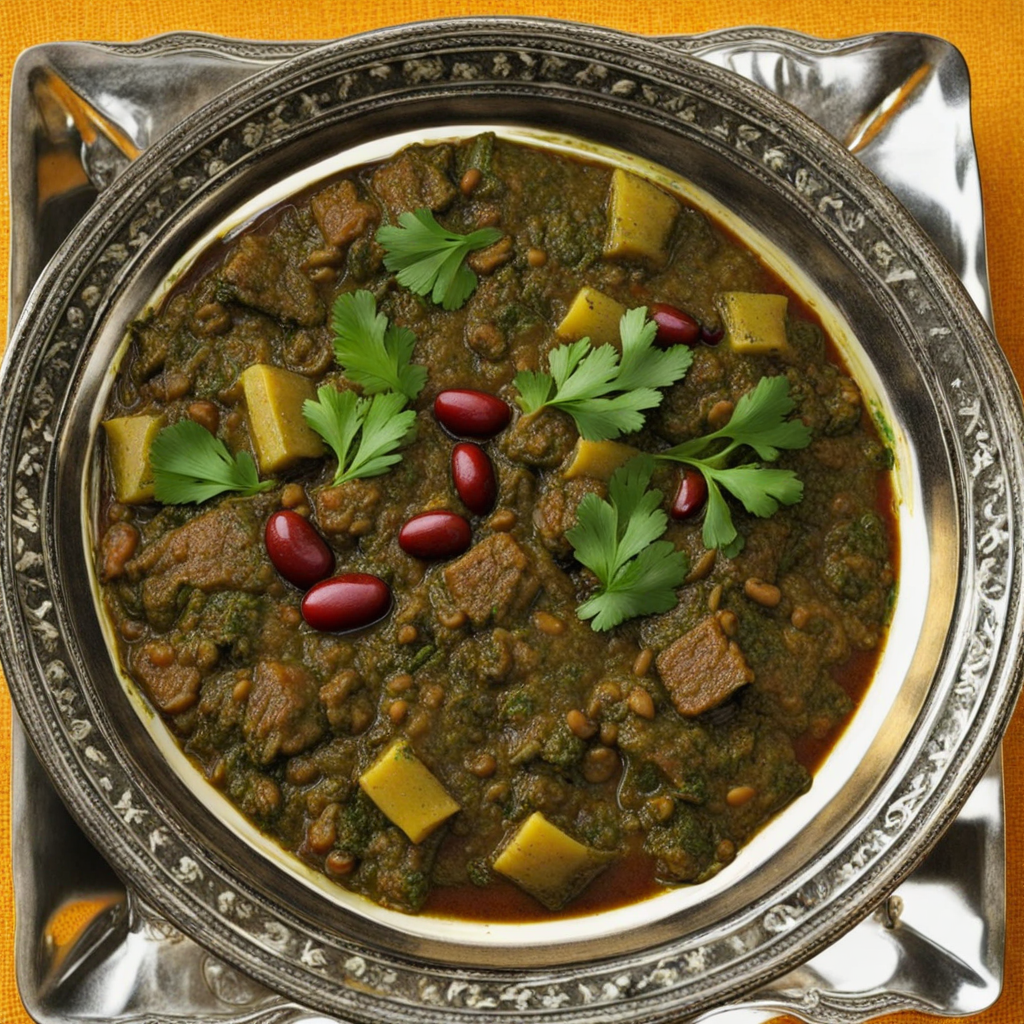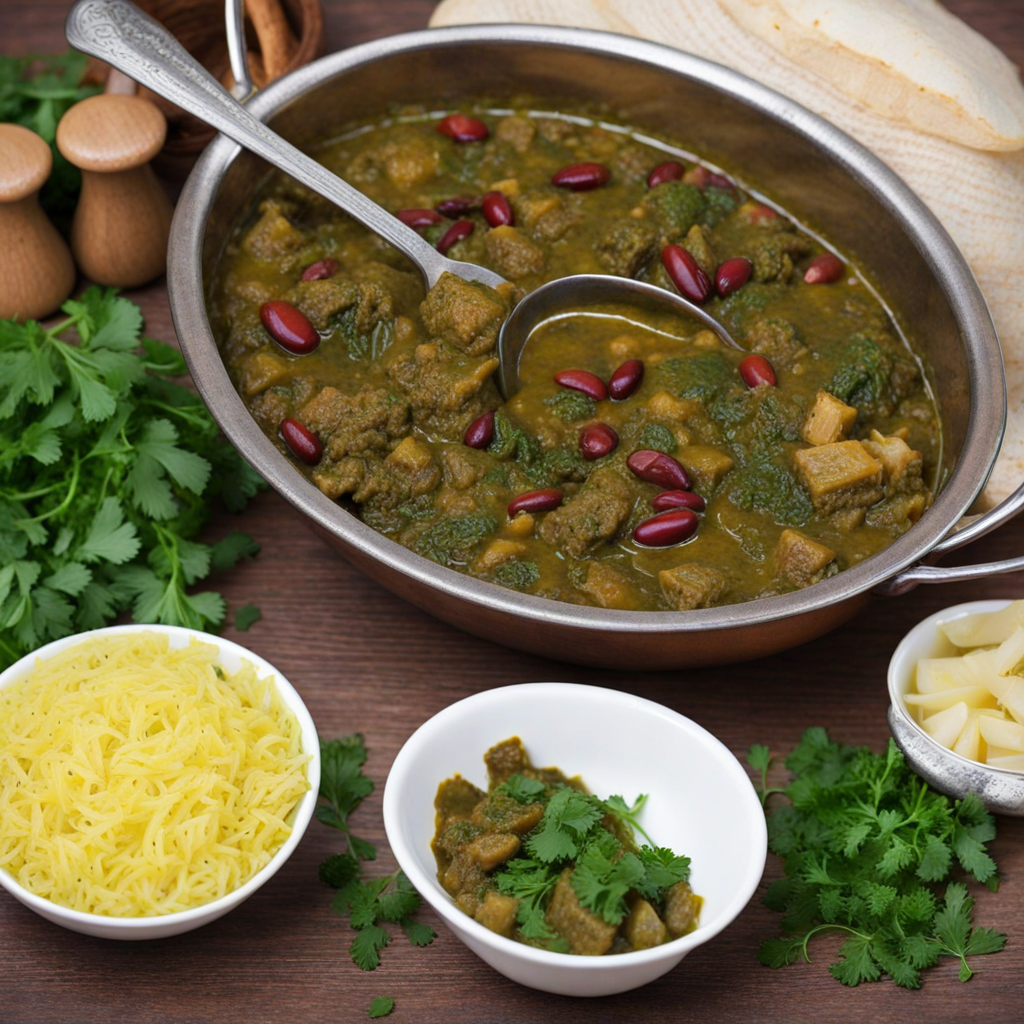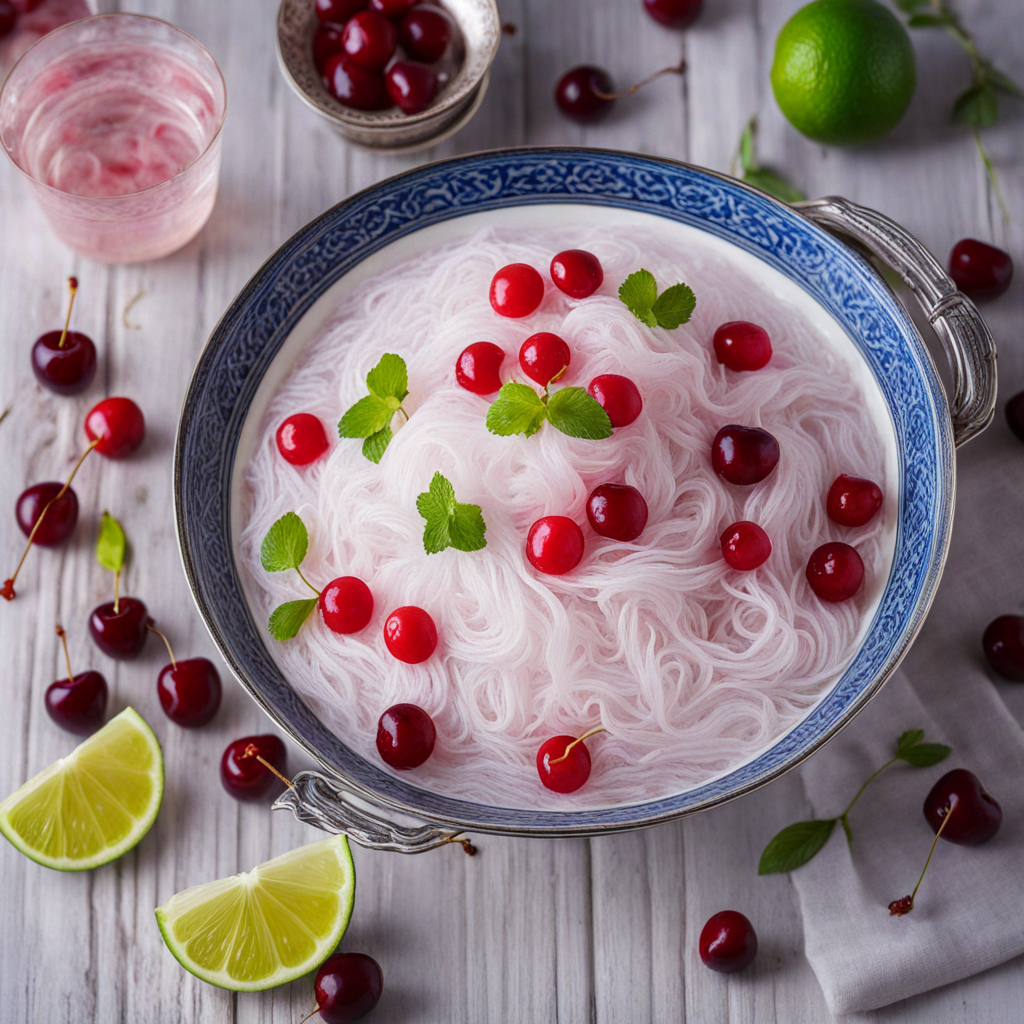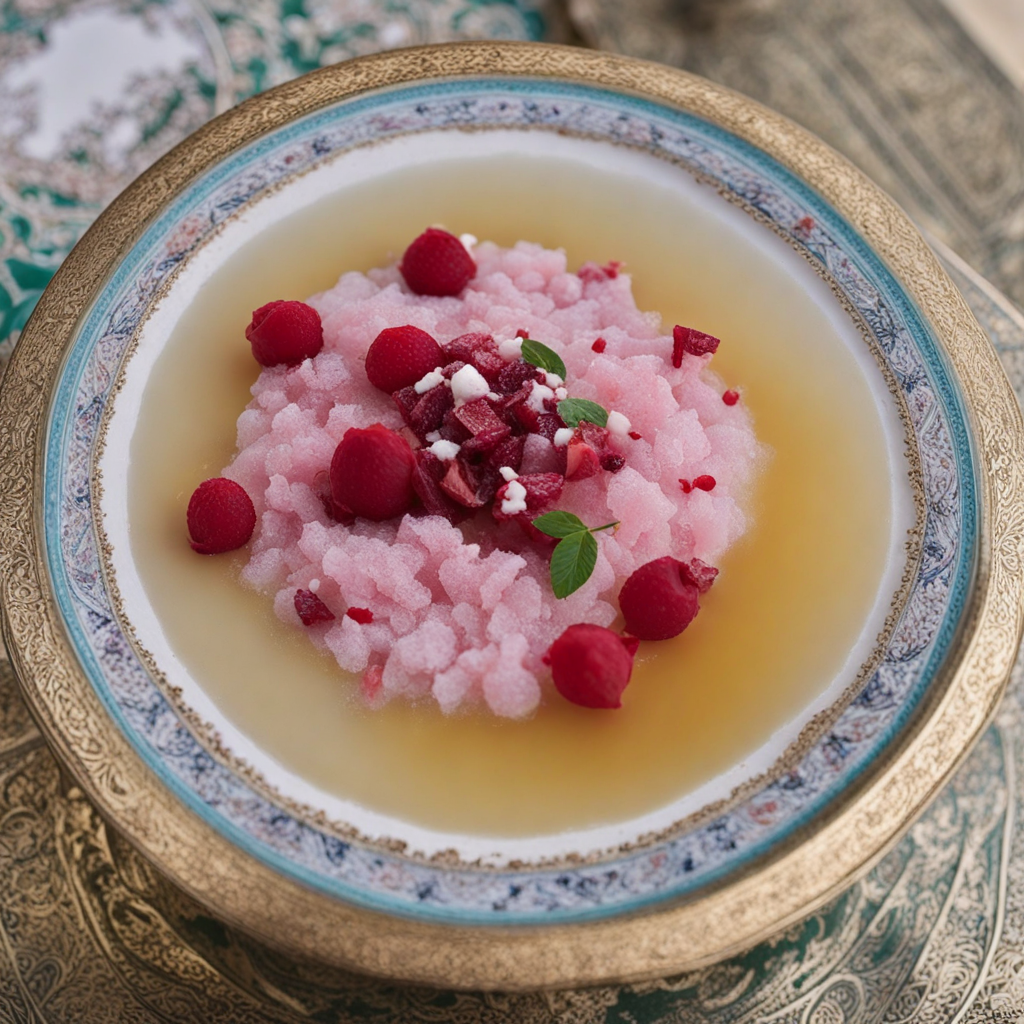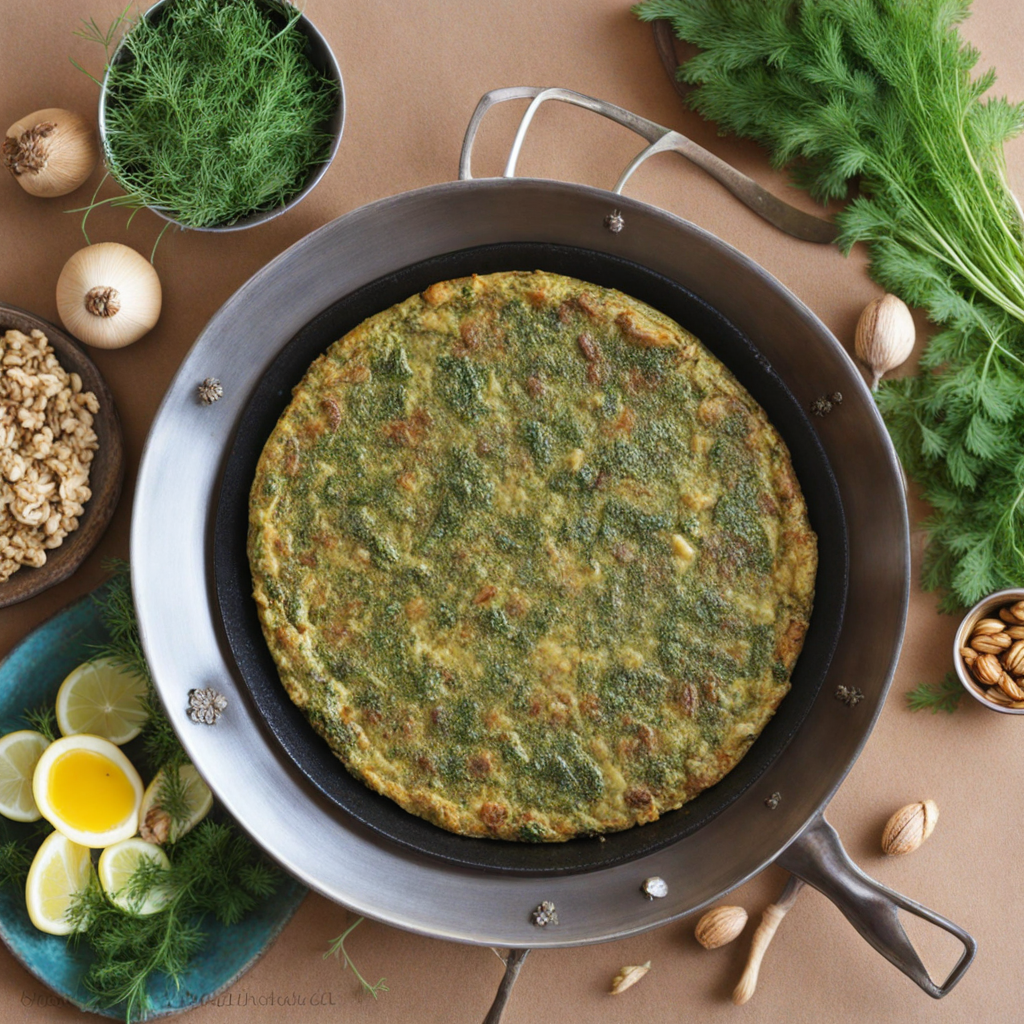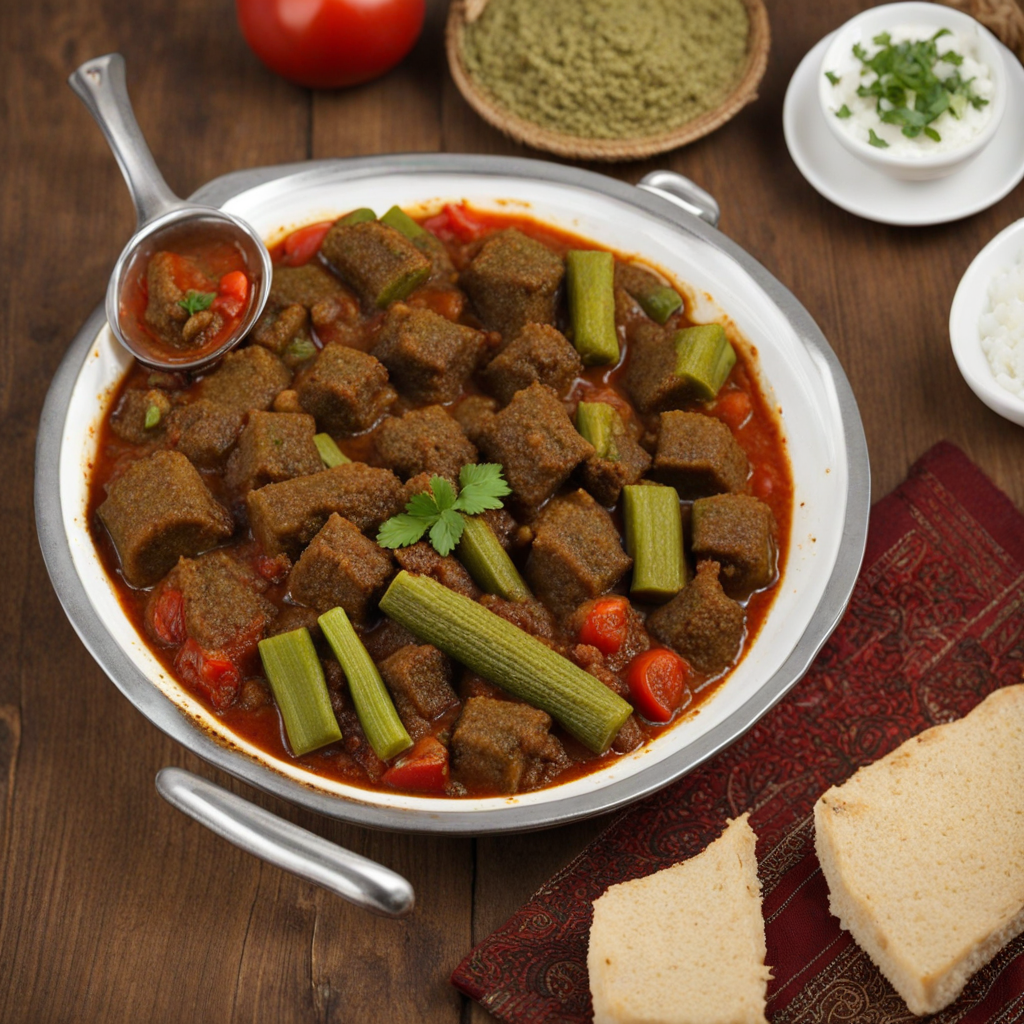Ghormeh Sabzi
Ghormeh Sabzi is a fragrant and flavorful Persian stew that beautifully showcases the rich culinary traditions of Iran. This dish is primarily made with tender pieces of lamb or beef, which are slowly cooked until they become melt-in-your-mouth tender. The star of the dish, however, is the vibrant green herb mixture, which typically includes parsley, cilantro, and fenugreek, along with green onions. These herbs are sautéed to release their essential oils, creating a fragrant base that infuses the entire stew with a fresh, aromatic essence that is both earthy and invigorating. In addition to the herbs, Ghormeh Sabzi features kidney beans, which add a creamy texture and a subtle sweetness to the dish. The stew is often flavored with dried limes, giving it a unique tang that balances the richness of the meat and the depth of the herbs. This combination of flavors creates a complex and satisfying dish that is both comforting and invigorating, making it a beloved staple in Persian cuisine. Traditionally served over a bed of fluffy basmati rice, Ghormeh Sabzi is often accompanied by a side of pickled vegetables or fresh herbs, enhancing its vibrant flavors even further. The visually stunning contrast of the deep green stew against the bright white rice is as appealing as the taste itself. For anyone looking to explore new culinary horizons, Ghormeh Sabzi offers a delightful introduction to the world of Persian flavors, making it a must-try for adventurous food lovers.
How It Became This Dish
Origins of قورمهسبزی قورمهسبزی, pronounced "ghormeh sabzi," is a traditional Iranian stew that has captivated palates for centuries. The dish's origins can be traced back to the Persian Empire, where it was likely influenced by the diverse culinary practices of the various cultures within the region. The name itself derives from two Persian words: "قورمه" (ghorme), meaning "stew," and "سبزی" (sabzi), meaning "herbs." This etymology reflects the dish's defining characteristics: a rich, flavorful stew made predominantly with herbs, legumes, and meat, usually lamb or beef. The primary herbs used in قورمهسبزی include parsley, cilantro, and fenugreek, which are sautéed to bring out their flavors before being combined with other ingredients. The use of dried limes, known as "لیمو عمانی" (limoo omani), adds a unique sourness that distinguishes this dish from other stews in Iranian cuisine. The combination of these ingredients showcases the sophisticated palate of Persian cooking, where balancing flavors is key. \n\n Cultural Significance In Iran, قورمهسبزی is more than just a staple dish; it is a symbol of hospitality and family gatherings. Often served during special occasions, such as weddings and religious celebrations, this stew plays an integral role in Iranian social life. Its preparation is frequently a communal activity, where family members gather to chop herbs, prepare the meat, and share stories, thus reinforcing bonds and traditions. The dish is deeply embedded in Persian literature and poetry as well. Many famous Persian poets, such as Hafez and Rumi, have referenced food in their works, using it as a metaphor for love and togetherness. قورمهسبزی, with its rich flavors and communal associations, often serves as a subject of admiration in these literary pieces. This connection between food and culture highlights the importance of قورمهسبزی as not just sustenance but a means of expressing identity and heritage. \n\n Development Over Time As Iranian society has evolved, so too has قورمهسبزی. Historical texts suggest that variations of the dish have been prepared since ancient times, with its fundamental components remaining relatively unchanged. However, regional adaptations have emerged, reflecting the local ingredients and tastes. For example, in some parts of Iran, people might add additional vegetables like spinach or use different types of meat, such as chicken or veal. The introduction of new cooking methods and ingredients, particularly during the Safavid dynasty (1501-1736), further transformed the way قورمهسبزی is prepared. The Safavids were known for their love of elaborate feasts and culinary experimentation, which likely contributed to the refinement of traditional dishes. The emphasis on combining spices and herbs to create complex flavors became a hallmark of Persian cuisine during this period. \n\n Modern Influences In contemporary Iranian society, قورمهسبزی continues to be a beloved dish, but modern influences and globalization have started to play a role in its preparation and consumption. With the rise of social media and food blogs, younger generations are exploring alternative methods of cooking and presenting traditional dishes. Some have started to experiment with vegetarian or vegan versions of قورمهسبزی, substituting meat with plant-based proteins while retaining the essential flavors of the dish. Additionally, the diaspora of Iranians around the world has led to an exchange of culinary ideas. In countries such as the United States, Canada, and parts of Europe, قورمهسبزی has found a place in multicultural settings, often served alongside other international dishes. This integration showcases the adaptability of Persian cuisine and highlights the enduring appeal of قورمهسبزی as a comfort food for Iranians, no matter where they reside. \n\n Cooking Techniques and Ingredients The preparation of قورمهسبزی involves several steps that contribute to its rich and complex flavor profile. Initially, the herbs are finely chopped and sautéed in oil until they reach a vibrant green color, which enhances their aroma and flavor. This technique is crucial, as it helps to release the essential oils within the herbs, allowing them to infuse the entire stew. Once the herbs are ready, the meat is added, followed by kidney beans and the distinctive dried limes. The stew is then simmered for several hours, allowing the flavors to meld together. The slow-cooking method is important, as it tenderizes the meat and ensures that the rich flavors develop fully. The result is a hearty stew that is typically served with steamed basmati rice, often garnished with saffron or fried onions. \n\n Conclusion: A Culinary Legacy As a dish that has transcended time and geography, قورمهسبزی stands as a testament to the rich culinary heritage of Iran. Its roots in ancient Persian culture, combined with its ongoing evolution and adaptation to modern tastes, reflect a dynamic food tradition that is deeply intertwined with Iranian identity. Whether enjoyed at a family gathering or as a comforting meal after a long day, قورمهسبزی continues to hold a special place in the hearts and homes of Iranians everywhere. Through its preparation and consumption, this iconic dish fosters a sense of community and belonging, ensuring that the flavors of Iran will be passed down through generations to come.
You may like
Discover local flavors from Iran


